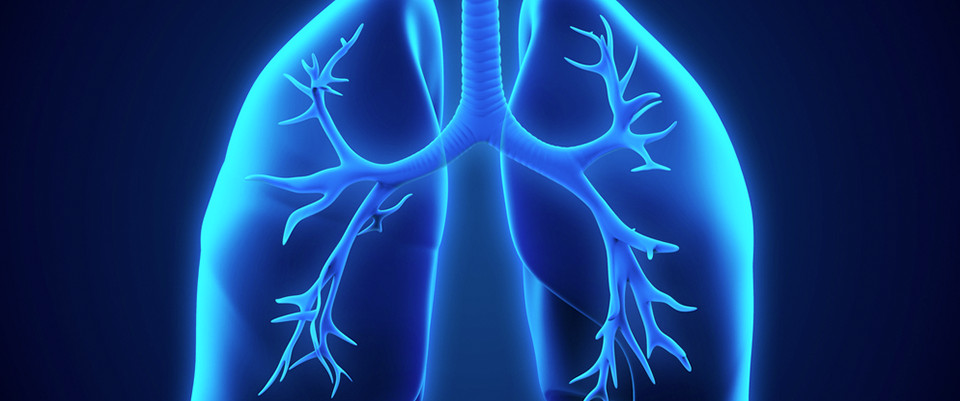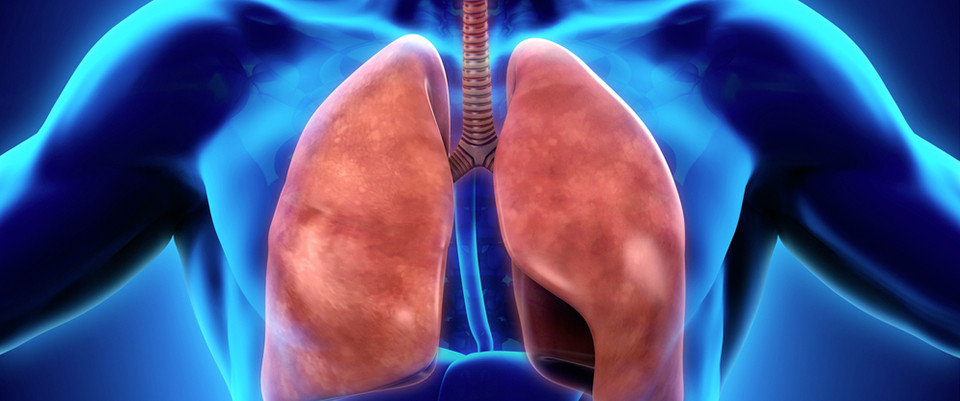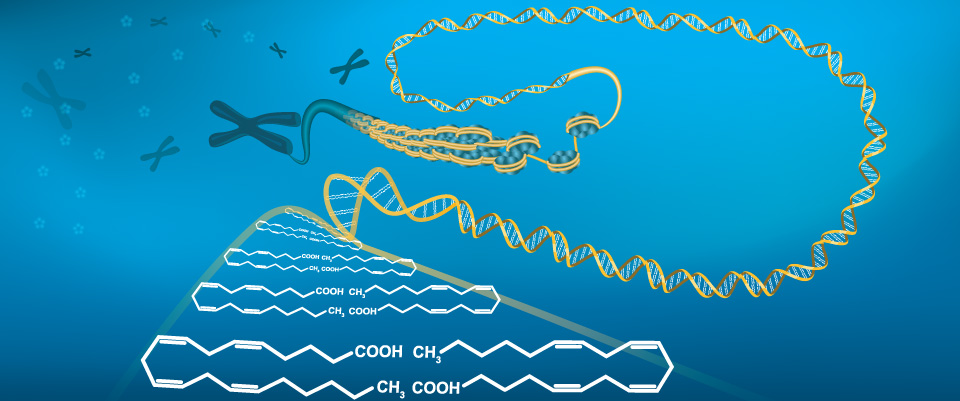PubMed
Predictors of Treatment Response in Rheumatoid Arthritis.
Predictors of Treatment Response in Rheumatoid Arthritis.
Joint Bone Spine. 2018 Jul 04;:
Authors: Lequerré T, Rottenberg P, Derambure C, Cosette P, Vittecoq O
Abstract
The expanding array of drugs available for treating rheumatoid arthritis is creating challenges in drug selection for the individual patient. The identification of biomarkers that predict the treatment response prior to drug exposure is therefore a current priority. This new approach, known as theranostics, is a component of personalized medicine, which involves selecting the management strategies that are most effective for a given patient at a given point in time. Antibodies to citrullinated peptides, rheumatoid factor, and the interferon signature are the most robust and best validated biomarkers identified to date. Matrices containing clinical or laboratory parameters of diagnostic or prognostic relevance may help to select the best treatment for the individual patient. Furthermore, the development of large-scale approaches requiring no a priori knowledge, such as functional genomics and metabolomics, hold considerable promise, despite persistent difficulties in replicating findings. The complexity of the treatment response in a given patient and substantial variability across patients suggest that biomarkers may be more helpful in combination than singly. The objectives of this review article are to discuss the approaches used to identify theranostic biomarkers and to present an overview of currently available biomarkers and of their performance in everyday clinical practice. However, the range of biomarkers suitable for use in daily practice remains extremely narrow.
PMID: 29981377 [PubMed - as supplied by publisher]
Metabolomic Profiling of rats'Urine After Oral Administration of the Prescription Antipyretic Hao Jia Xu Re Qing Granules by UPLC/Q-TOF-MS.
Metabolomic Profiling of rats'Urine After Oral Administration of the Prescription Antipyretic Hao Jia Xu Re Qing Granules by UPLC/Q-TOF-MS.
Biomed Chromatogr. 2018 Jul 07;:e4332
Authors: Yu CQ, Chen JP, Zhong YM, Zhong XL, Tang CP, Yang Y, Lin HQ
Abstract
Hao Jia Xu Re Qing Granules (HJ), is an effective clinically used antipyretic based on Traditional Chinese Medicine (TCM). Although its antipyretic therapeutic effectiveness is obvious, its therapeutic mechanism has not been comprehensively explored yet. In this research, we first identified potential biomarkers which may be relevant for the antipyretic effect of HJ based on urine metabolomics using Ultra-performance liquid chromatography-quadrupole time-of-flight mass spectrometry (UPLC-Q-TOF-MS). A rat model of fever was established using the yeast-induced febrile response. Total-ion-current metabolic profiles of different groups were acquired and the data were processed by multivariate statistical analysis-partial least-squares discriminant analysis (PLSDA). As envisioned, the results revealed changes of urine metabolites related to the antipyretic effect. fourteen potential biomarkers were selected from the urine samples based on the results of Student's t-test, "shrinkaget", variable importance in projection (VIP), and PLSDA. N-acetylleucine, kynurenic acid, indole-3-ethanol, nicotinuric acid, pantothenic acid, and tryptophan were the most significant biomarkers found in the urine samples, and may be crucially related to the antipyretic effect of HJ. Consequently, we propose the hypothesis that the significant antipyretic effect the HJ may be related to the inhibition of tryptophan metabolism. This research thus provides strong theoretical support and further direction to explain the antipyretic mechanism of HJ, laying the foundation for future studies.
PMID: 29981286 [PubMed - as supplied by publisher]
Transformed Root Culture: From Genetic Transformation to NMR-Based Metabolomics.
Related Articles
Transformed Root Culture: From Genetic Transformation to NMR-Based Metabolomics.
Methods Mol Biol. 2018;1815:457-474
Authors: Marchev AS, Yordanova ZP, Georgiev MI
Abstract
Hairy root (HR) culture is considered as "green factory" for mass production of bioactive molecules with pharmaceutical relevance. As such, HR culture has an immense potential as a valuable platform to elucidate biosynthetic pathways and physiological processes, generate recombinant therapeutic proteins, assist molecular breeding, and enhance phytoremediation efforts. However, some plant species appear recalcitrant to the classical Agrobacterium rhizogenes transformation techniques. Sonication-assisted Agrobacterium-mediated transformation (SAArT) is a highly effective method to deliver bacteria to target plant tissues that includes exposure of the explants to short periods of ultrasound in the presence of the bacteria.Nuclear magnetic resonance (NMR)-based metabolomics is one of the most powerful and suitable platforms for identifying and obtaining structural information on a wide range of compounds with a high analytical precision. In terms of plant science, NMR metabolomics is used to determine the phytochemical variations of medicinal plants or commercial cultivars in certain environments and conditions, including biotic stress and plant biotic interaction, structural determination of natural products, quality control of herbal drugs or dietary supplements, and comparison of metabolite differences between plants and their respective in vitro cultures.In this chapter, we attempt to summarize our knowledge and expertise in induction of hairy roots from rare and recalcitrant plant species by SAArT technique and further methodology for extraction of secondary metabolites of moderate to high polarity and their identification by using NMR-based metabolomics.
PMID: 29981142 [PubMed - in process]
Analysis of Terpenoid Indole Alkaloids, Carotenoids, Phytosterols, and NMR-Based Metabolomics for Catharanthus roseus Cell Suspension Cultures.
Related Articles
Analysis of Terpenoid Indole Alkaloids, Carotenoids, Phytosterols, and NMR-Based Metabolomics for Catharanthus roseus Cell Suspension Cultures.
Methods Mol Biol. 2018;1815:437-455
Authors: Saiman MZ, Mustafa NR, Verpoorte R
Abstract
The plant Catharanthus roseus is a rich source of terpenoid indole alkaloids (TIA). Some of the TIA are important as antihypertensive (ajmalicine) and anticancer (vinblastine and vincristine) drugs. However, production of the latter is very low in the plant. Therefore, in vitro plant cell cultures have been considered as a potential supply of these chemicals or their precursors. Some monomeric alkaloids can be produced by plant cell cultures, but not on a level feasible for commercialization, despite extensive studies on this plant that deepened the understanding of the TIA biosynthesis and its regulation. In order to analyze the metabolites in C. roseus cell cultures, this chapter presents the method of TIA, carotenoids, and phytosterols analyses. Furthermore, an NMR-based metabolomics approach to study C. roseus cell culture is described.
PMID: 29981141 [PubMed - in process]
An Introduction to Plant Tissue Culture: Advances and Perspectives.
Related Articles
An Introduction to Plant Tissue Culture: Advances and Perspectives.
Methods Mol Biol. 2018;1815:3-13
Authors: Loyola-Vargas VM, Ochoa-Alejo N
Abstract
Plant tissue culture techniques are the most frequently used biotechnological tools for basic and applied purposes ranging from investigation on plant developmental processes, functional gene studies, commercial plant micropropagation, generation of transgenic plants with specific industrial and agronomical traits, plant breeding and crop improvement, virus elimination from infected materials to render high-quality healthy plant material, preservation and conservation of germplasm of vegetative propagated plant crops, and rescue of threatened or endangered plant species. Additionally, plant cell and organ cultures are of interest for the production of secondary metabolites of industrial and pharmaceutical interest. New technologies, such as the genome editing ones combined with tissue culture and Agrobacterium tumefaciens infection, are currently promising alternatives for the highly specific genetic manipulation of interesting agronomical or industrial traits in crop plants. Application of omics (genomics, transcriptomics, and proteomics) to plant tissue culture will certainly help to unravel complex developmental processes such as organogenesis and somatic embryogenesis, which will probably enable to improve the efficiency of regeneration protocols for recalcitrant species. Additionally, metabolomics applied to tissue culture will facilitate the extraction and characterization of complex mixtures of natural plant products of industrial interest. General and specific aspects and applications of plant tissue culture and the advances and perspectives are described in this edition.
PMID: 29981111 [PubMed - in process]
The EMIF-AD Multimodal Biomarker Discovery study: design, methods and cohort characteristics.
Related Articles
The EMIF-AD Multimodal Biomarker Discovery study: design, methods and cohort characteristics.
Alzheimers Res Ther. 2018 Jul 06;10(1):64
Authors: Bos I, Vos S, Vandenberghe R, Scheltens P, Engelborghs S, Frisoni G, Molinuevo JL, Wallin A, Lleó A, Popp J, Martinez-Lage P, Baird A, Dobson R, Legido-Quigley C, Sleegers K, Van Broeckhoven C, Bertram L, Ten Kate M, Barkhof F, Zetterberg H, Lovestone S, Streffer J, Visser PJ
Abstract
BACKGROUND: There is an urgent need for novel, noninvasive biomarkers to diagnose Alzheimer's disease (AD) in the predementia stages and to predict the rate of decline. Therefore, we set up the European Medical Information Framework for Alzheimer's Disease Multimodal Biomarker Discovery (EMIF-AD MBD) study. In this report we describe the design of the study, the methods used and the characteristics of the participants.
METHODS: Participants were selected from existing prospective multicenter and single-center European studies. Inclusion criteria were having normal cognition (NC) or a diagnosis of mild cognitive impairment (MCI) or AD-type dementia at baseline, age above 50 years, known amyloid-beta (Aβ) status, availability of cognitive test results and at least two of the following materials: plasma, DNA, magnetic resonance imaging (MRI) or cerebrospinal fluid (CSF). Targeted and untargeted metabolomic and proteomic analyses were performed in plasma, and targeted and untargeted proteomics were performed in CSF. Genome-wide SNP genotyping, next-generation sequencing and methylation profiling were conducted in DNA. Visual rating and volumetric measures were assessed on MRI. Baseline characteristics were analyzed using ANOVA or chi-square, rate of decline analyzed by linear mixed modeling.
RESULTS: We included 1221 individuals (NC n = 492, MCI n = 527, AD-type dementia n = 202) with a mean age of 67.9 (SD 8.3) years. The percentage Aβ+ was 26% in the NC, 58% in the MCI, and 87% in the AD-type dementia groups. Plasma samples were available for 1189 (97%) subjects, DNA samples for 929 (76%) subjects, MRI scans for 862 (71%) subjects and CSF samples for 767 (63%) subjects. For 759 (62%) individuals, clinical follow-up data were available. In each diagnostic group, the APOE ε4 allele was more frequent amongst Aβ+ individuals (p < 0.001). Only in MCI was there a difference in baseline Mini Mental State Examination (MMSE) score between the A groups (p < 0.001). Aβ+ had a faster rate of decline on the MMSE during follow-up in the NC (p < 0.001) and MCI (p < 0.001) groups.
CONCLUSIONS: The characteristics of this large cohort of elderly subjects at various cognitive stages confirm the central roles of Aβ and APOE ε4 in AD pathogenesis. The results of the multimodal analyses will provide new insights into underlying mechanisms and facilitate the discovery of new diagnostic and prognostic AD biomarkers. All researchers can apply for access to the EMIF-AD MBD data by submitting a research proposal via the EMIF-AD Catalog.
PMID: 29980228 [PubMed - in process]
Analysis of pharmaceuticals and small molecules in aqueous humor.
Analysis of pharmaceuticals and small molecules in aqueous humor.
J Pharm Biomed Anal. 2018 Jun 25;159:23-36
Authors: Pietrowska K, Dmuchowska DA, Krasnicki P, Mariak Z, Kretowski A, Ciborowski M
Abstract
Aqueous humor (AH) is a transparent fluid found in the anterior chamber of the eye. The circulating AH nourishes the cornea and lens and removes the metabolic waste moving through the ocular chambers and drains from the eye to the venous blood. Analysis of drugs in AH is necessary to evaluate their pharmacokinetics parameters, which may be crucial to avoid potential adverse effects. Analysis of endogenous components of AH may help to understand its physiology as well as changes evoked by pathological situation. This review describes analytical methods used for determination of pharmaceuticals and small endogenous molecules in AH, focusing on sample preparation procedures and analytical techniques. Studies on human and animal samples are included. After inspection and filtering of records found in PubMed about 100 research papers were selected to review. In these articles AH samples of human and rabbit origin were studied most often. Sample evaporation and reconstitution in smaller solvent volume was the most popular method for analyte pre-concentration. Acetonitrile, methanol or mixture of both solvents were used most often for protein precipitation.
PMID: 29980016 [PubMed - as supplied by publisher]
Effects of lobeglitazone on insulin resistance and hepatic steatosis in high-fat diet-fed mice.
Effects of lobeglitazone on insulin resistance and hepatic steatosis in high-fat diet-fed mice.
PLoS One. 2018;13(7):e0200336
Authors: Choi BH, Jin Z, Yi CO, Oh J, Jeong EA, Lee JY, Park KA, Kim KE, Lee JE, Kim HJ, Hahm JR, Roh GS
Abstract
Lobeglitazone (Lobe) is a novel thiazolidinedione antidiabetic drug that reduces insulin resistance by activating peroxisome proliferator-activated receptor-gamma (PPARγ). However, the exact mechanisms of antidiabetic effects of Lobe have not been established in an animal model. The aim of this study was to evaluate the hypoglycemic effects of Lobe and investigate possible factors involved in Lobe-enhanced hepatic steatosis in high-fat diet (HFD)-fed mice. Mice were fed an HFD for 15 weeks. Lobe was administrated orally during the last 9 weeks. Lobe treatment significantly reduced insulin resistance and increased expression of hepatic glucose transporter 4 (GLUT4) and PPARs in HFD-fed mice. However, increased body weight and hepatic steatosis were not reduced by Lobe in these mice. Metabolomics fingerprinting showed that several lipogenesis-related hepatic and serum metabolites in HFD-fed mice had positive or negative correlations with Lobe administration. In particular, increased leptin levels during HFD were further increased by Lobe. HFD-induced signaling transducer and activator of transcription 3 (STAT3) phosphorylation in the hypothalamus was increased by Lobe. In addition, immunohistochemical analysis showed more proopiomelanocortin (POMC)-positive neurons in the hypothalamus of HFD-fed mice (with or without Lobe) compared with normal diet-fed mice. Despite improving leptin signaling in the hypothalamus and enhancing insulin sensitivity in HFD-fed mice, Lobe increased body weight and steatosis. Further research is necessary regarding other factors affecting Lobe-enhanced hepatic steatosis and hyperphagia.
PMID: 29979770 [PubMed - in process]
HappyTools: A software for high-throughput HPLC data processing and quantitation.
HappyTools: A software for high-throughput HPLC data processing and quantitation.
PLoS One. 2018;13(7):e0200280
Authors: Jansen BC, Hafkenscheid L, Bondt A, Gardner RA, Hendel JL, Wuhrer M, Spencer DIR
Abstract
High-performance liquid chromatography (HPLC) is widely used for absolute quantitation. The advent of new columns and HPLC technology has enabled higher sample throughput, and hence, larger scale studies that perform quantitation on different sample types (e.g. healthy controls vs. patients with rheumatoid arthritis) using HPLC are becoming feasible. However, there remains a lack of methods that can analyse the increased number of HPLC samples. To address this in part, the modular toolkit HappyTools has been developed for the high-throughput targeted quantitation of HPLC measurements. HappyTools enables the user to create an automated workflow that includes retention time (tr) calibration, data extraction and the calculation of several quality criteria for data curation. HappyTools has been tested on a biopharmaceutical standard and previously published clinical samples. The results show comparable accuracy between HappyTools, Waters Empower and ThermoFisher Chromeleon. However, HappyTools offered superior precision and throughput when compared with Waters Empower and ThermoFisher Chromeleon. HappyTools is released under the Apache 2.0 license, both the source code and a Windows binary can be freely downloaded from https://github.com/Tarskin/HappyTools.
PMID: 29979768 [PubMed - in process]
Plant galactolipid dLGG suppresses lung metastasis of melanoma through deregulating TNF-α-mediated pulmonary vascular permeability and circulating oxylipin dynamics in mice.
Related Articles
Plant galactolipid dLGG suppresses lung metastasis of melanoma through deregulating TNF-α-mediated pulmonary vascular permeability and circulating oxylipin dynamics in mice.
Int J Cancer. 2018 Jul 06;:
Authors: Yang CC, Chang CK, Chang MT, Shyur LF
Abstract
This study demonstrates the bioefficacy and gives mechanistic insights into a plant galactolipid 1,2-di-O-linolenoyl-3-O-β-galactopyranosyl-sn-glycerol (dLGG) against metastatic melanoma using a syngeneic mouse model implanted with B16COX-2/Luc melanoma. dLGG-20 (p.o. dLGG 20 mg/kg) and anti-cancer drug CP-2 (i.p. cisplatin 2 mg/kg) treatment significantly inhibited lung metastasis of melanoma in mice 91% and 57%, respectively, as determined by bioluminescence intensity. Moreover, dLGG-20 and CP-2 treatment prolonged mouse mean survival time. dLGG-20 treatment significantly inhibited the expression levels of several molecular markers, i.e., PCNA, MMP2, COX-2, VEGF, vimentin, snail, TGF-β, β-catenin, TNF-α, PD-1 and PD-L1 in mouse lung tissues compared to tumor control mice. Significant inhibition of macrophage and neutrophil infiltration and promotion of CD8+Tc cell recruitment in the lung microenvironment was observed in dLGG-20-treated mice. A LC/MS-based comparative oxylipin metabolomics study showed that dLGG-20 treatment significantly induced (5.0- to 12.8-fold) the 12/15-LOX catalyzed oxylipin products in mouse serum including 17-HDHA from DHA, 15-HEPE from EPA, 8- and 12-HETEs from AA, and CYP450-derived 20-HETE from AA. CP-2 treatment increased 12/15-LOX derived 8-, 11- and 12-HETEs from AA, and CYP450 derived 11(12)-EET from AA and 9,10-DHOME from LA by 5.3- to 8.1-fold. Of note, dLGG and 17-HDHA were more effective than CP in preventing B16 melanoma cell-induced pulmonary vascular permeability in mice through inhibition of TNF-α production, up-regulation of tight junction proteins claudin1 and ZO-2, and deregulation of Src activation. In conclusion, this study shows the novel therapeutic effect of phytoagent dLGG and suggests its potential as a therapeutic agent for metastatic melanoma. This article is protected by copyright. All rights reserved.
PMID: 29978476 [PubMed - as supplied by publisher]
The use of Metabolomics to Elucidate Resistance Markers Against Damson-Hop Aphid.
Related Articles
The use of Metabolomics to Elucidate Resistance Markers Against Damson-Hop Aphid.
J Chem Ecol. 2018 Jul 06;:
Authors: Undas AK, Weihrauch F, Lutz A, van Tol R, Delatte T, Verstappen F, Bouwmeester H
Abstract
Phorodon humuli (Damson-hop aphid) is one of the major pests of hops in the northern hemisphere. It causes significant yield losses and reduces hop quality and economic value. Damson-hop aphid is currently controlled with insecticides, but the number of approved pesticides is steadily decreasing. In addition, the use of insecticides almost inevitably results in the development of resistant aphid genotypes. An integrated approach to pest management in hop cultivation is therefore badly needed in order to break this cycle and to prevent the selection of strains resistant to the few remaining registered insecticides. The backbone of such an integrated strategy is the breeding of hop cultivars that are resistant to Damson-hop aphid. However, up to date mechanisms of hops resistance towards Damson-hop aphids have not yet been unraveled. In the experiments presented here, we used metabolite profiling followed by multivariate analysis and show that metabolites responsible for hop aroma and flavor (sesquiterpenes) in the cones can also be found in the leaves, long before the hop cones develop, and may play a role in resistance against aphids. In addition, aphid feeding induced a change in the metabolome of all hop genotypes particularly an increase in a number of oxidized compounds, which suggests this may be part of a resistance mechanism.
PMID: 29978430 [PubMed - as supplied by publisher]
The assessment of metabolite alteration induced by -OH functionalized multi-walled carbon nanotubes in mice using NMR-based metabonomics.
Related Articles
The assessment of metabolite alteration induced by -OH functionalized multi-walled carbon nanotubes in mice using NMR-based metabonomics.
Bioimpacts. 2018;8(2):107-116
Authors: Baghdadchi Y, Khoshkam M, Fathi M, Jalilvand A, Fooladsaz K, Ramazani A
Abstract
Introduction: There is a fundamental need to characterize multiwalled carbon nanotubes (MWCNTs) toxicity to guarantee their safe application. Functionalized MWCNTs have recently attracted special interest in order to enhance biocompatibility. The aim of the current work was to study the underlying toxicity mechanism of the -OH-functionalized MWCNTs (MWCNTs-OH), using the powerful NMR-based metabonomics technique. Methods: Following intraperitoneal single-injection of mice with 3 doses of MWCNTs-OH and one control, samples were collected at four time points during 22-days for NMR, biochemistry, and histopathology analysis. Metabolome profiling and pathway analysis were implemented by chemometrics tools and metabolome databases. Results: Based on the 1H-NMR data, metabolic perturbation induced by MWCNTs-OH were characterized by altered levels of steroid hormones, including elevated androgens, estrogens, corticosterone, and aldosterone. Moreover, increased L-lysine, aminoadipate, taurine and taurocholic acid and decreased biotin were observed in the high-dose group (1 mg.kg-1 B.W.) compared to the control. The findings also indicated that steroid hormone biosynthesis, lysine biosynthesis, and biotin metabolism are the most affected pathways by MWCNTs-OH. Conclusion: These pathways can reflect perturbation of energy, amino acids, and fat metabolism, as well as oxidative stress. The data obtained by biochemistry, metabonomics, and histopathology were in good agreement, proving that MWCNTs-OH was excreted within 24 h, through the biliary pathway.
PMID: 29977832 [PubMed]
A novel integrated non-targeted metabolomic analysis reveals significant metabolite variations between different lettuce (Lactuca sativa. L) varieties.
Related Articles
A novel integrated non-targeted metabolomic analysis reveals significant metabolite variations between different lettuce (Lactuca sativa. L) varieties.
Hortic Res. 2018;5:33
Authors: Yang X, Wei S, Liu B, Guo D, Zheng B, Feng L, Liu Y, Tomás-Barberán FA, Luo L, Huang D
Abstract
Lettuce is an important leafy vegetable that represents a significant dietary source of antioxidants and bioactive compounds. However, the levels of metabolites in different lettuce cultivars are poorly characterized. In this study, we used combined GC × GC-TOF/MS and UPLC-IMS-QTOF/MS to detect and relatively quantify metabolites in 30 lettuce cultivars representing large genetic diversity. Comparison with online databases, the published literature, standards as well using collision cross-section values enabled putative identification of 171 metabolites. Sixteen of these 171 metabolites (including phenolic acid derivatives, glycosylated flavonoids, and one iridoid) were present at significantly different levels in leaf and head type lettuces, which suggested the significant metabolomic variations between the leaf and head types of lettuce are related to secondary metabolism. A combination of the results and metabolic network analysis techniques suggested that leaf and head type lettuces contain not only different levels of metabolites but also have significant variations in the corresponding associated metabolic networks. The novel lettuce metabolite library and novel non-targeted metabolomics strategy devised in this study could be used to further characterize metabolic variations between lettuce cultivars or other plants. Moreover, the findings of this study provide important insight into metabolic adaptations due to natural and human selection, which could stimulate further research to potentially improve lettuce quality, yield, and nutritional value.
PMID: 29977569 [PubMed]
Field-Based Metabolomics of Vitis vinifera L. Stems Provides New Insights for Genotype Discrimination and Polyphenol Metabolism Structuring.
Related Articles
Field-Based Metabolomics of Vitis vinifera L. Stems Provides New Insights for Genotype Discrimination and Polyphenol Metabolism Structuring.
Front Plant Sci. 2018;9:798
Authors: Billet K, Houillé B, Dugé de Bernonville T, Besseau S, Oudin A, Courdavault V, Delanoue G, Guérin L, Clastre M, Giglioli-Guivarc'h N, Lanoue A
Abstract
Grape accumulates numerous polyphenols with abundant health benefit and organoleptic properties that in planta act as key components of the plant defense system against diseases. Considerable advances have been made in the chemical characterization of wine metabolites particularly volatile and polyphenolic compounds. However, the metabotyping (metabolite-phenotype characterization) of grape varieties, from polyphenolic-rich vineyard by-product is unprecedented. As this composition might result from the complex interaction between genotype, environment and viticultural practices, a field experiment was setting up with uniform pedo-climatic factors and viticultural practices of growing vines to favor the genetic determinism of polyphenol expression. As a result, UPLC-MS-based targeted metabolomic analyses of grape stems from 8 Vitis vinifera L. cultivars allowed the determination of 42 polyphenols related to phenolic acids, flavonoids, procyanidins, and stilbenoids as resveratrol oligomers (degree of oligomerization 1-4). Using a partial least-square discriminant analysis approach, grape stem chemical profiles were discriminated according to their genotypic origin showing that polyphenol profile express a varietal signature. Furthermore, hierarchical clustering highlights various degree of polyphenol similarity between grape varieties that were in agreement with the genetic distance using clustering analyses of 22 microsatellite DNA markers. Metabolite correlation network suggested that several polyphenol subclasses were differently controlled. The present polyphenol metabotyping approach coupled to multivariate statistical analyses might assist grape selection programs to improve metabolites with both health-benefit potential and plant defense traits.
PMID: 29977248 [PubMed]
ABRF Proteome Informatics Research Group (iPRG) 2016 Study: Inferring Proteoforms from Bottom-up Proteomics Data.
Related Articles
ABRF Proteome Informatics Research Group (iPRG) 2016 Study: Inferring Proteoforms from Bottom-up Proteomics Data.
J Biomol Tech. 2018 Jun 21;:
Authors: Lee JY, Choi H, Colangelo CM, Davis D, Hoopmann MR, Käll L, Lam H, Payne SH, Perez-Riverol Y, The M, Wilson R, Weintraub ST, Palmblad M
Abstract
This report presents the results from the 2016 Association of Biomolecular Resource Facilities Proteome Informatics Research Group (iPRG) study on proteoform inference and false discovery rate (FDR) estimation from bottom-up proteomics data. For this study, 3 replicate Q Exactive Orbitrap liquid chromatography-tandom mass spectrometry datasets were generated from each of 4 Escherichia coli samples spiked with different equimolar mixtures of small recombinant proteins selected to mimic pairs of homologous proteins. Participants were given raw data and a sequence file and asked to identify the proteins and provide estimates on the FDR at the proteoform level. As part of this study, we tested a new submission system with a format validator running on a virtual private server (VPS) and allowed methods to be provided as executable R Markdown or IPython Notebooks. The task was perceived as difficult, and only eight unique submissions were received, although those who participated did well with no one method performing best on all samples. However, none of the submissions included a complete Markdown or Notebook, even though examples were provided. Future iPRG studies need to be more successful in promoting and encouraging participation. The VPS and submission validator easily scale to much larger numbers of participants in these types of studies. The unique "ground-truth" dataset for proteoform identification generated for this study is now available to the research community, as are the server-side scripts for validating and managing submissions.
PMID: 29977167 [PubMed - as supplied by publisher]
Medium- and high-intensity rTMS reduces psychomotor agitation with distinct neurobiologic mechanisms.
Related Articles
Medium- and high-intensity rTMS reduces psychomotor agitation with distinct neurobiologic mechanisms.
Transl Psychiatry. 2018 Jul 05;8(1):126
Authors: Heath A, Lindberg DR, Makowiecki K, Gray A, Asp AJ, Rodger J, Choi DS, Croarkin PE
Abstract
Definitive data are lacking on the mechanism of action and biomarkers of repetitive transcranial magnetic stimulation (rTMS) for the treatment of depression. Low-intensity rTMS (LI-rTMS) has demonstrated utility in preclinical models of rTMS treatments but the effects of LI-rTMS in murine models of depression are unknown. We examined the behavioral and neurobiologic changes in olfactory bulbectomy (OB) mice with medium-intensity rTMS (MI-rTMS) treatment and fluoxetine hydrochloride. We then compared 10-Hz rTMS sessions for 3 min at intensities (measured at the cortical surface) of 4 mT (LI-rTMS), 50 mT (medium-intensity rTMS [MI-rTMS]), or 1 T (high-intensity rTMS [HI-rTMS]) 5 days per week over 4 weeks in an OB model of agitated depression. Behavioral effects were assessed with forced swim test; neurobiologic effects were assessed with brain levels of 5-hydroxytryptamine, brain-derived neurotrophic factor (BDNF), and neurogenesis. Peripheral metabolomic changes induced by OB and rTMS were monitored through enzyme-linked immunosorbent assay and ultrapressure liquid chromatography-driven targeted metabolomics evaluated with ingenuity pathway analysis (IPA). MI-rTMS and HI-rTMS attenuated psychomotor agitation but only MI-rTMS increased BDNF and neurogenesis levels. HI-rTMS normalized the plasma concentration of α-amino-n-butyric acid and 3-methylhistidine. IPA revealed significant changes in glutamine processing and glutamate signaling in the OB model and following MI-rTMS and HI-rTMS treatment. The present findings suggest that MI-rTMS and HI-rTMS induce differential neurobiologic changes in a mouse model of agitated depression. Further, α-amino-n-butyric acid and 3-methylhistidine may have utility as biomarkers to objectively monitor the response to rTMS treatment of depression.
PMID: 29976924 [PubMed - in process]
Comprehensive quality evaluation and comparison of Angelica sinensis radix and Angelica acutiloba radix by integrated metabolomics and glycomics.
Related Articles
Comprehensive quality evaluation and comparison of Angelica sinensis radix and Angelica acutiloba radix by integrated metabolomics and glycomics.
J Food Drug Anal. 2018 Jul;26(3):1122-1137
Authors: Zhou SS, Xu J, Tsang CK, Yip KM, Yeung WP, Zhao ZZ, Zhu S, Fushimi H, Chang HY, Chen HB
Abstract
Angelica radix (Danggui in Chinese) used in China and Japan is derived from two species of Angelica, namely Angelica sinensis and Angelica acutiloba, respectively. The differences in quality between A. sinensis radix (ASR) and A. acutiloba radix (AAR) should be therefore investigated to guide the medicinal and dietary applications of these two species. Secondary metabolites and carbohydrates have been demonstrated to be the two major kinds of bioactive components of Danggui. However, previously, quality comparison between ASR and AAR intensively concerned secondary metabolites but largely overlooked carbohydrates, thus failing to include or take into consideration an important aspect of the holistic quality of Danggui. In this study, untargeted/targeted metabolomics and glycomics were integrated by multiple chromatography-based analytical techniques for qualitative and quantitative characterization of secondary metabolites and carbohydrates in Danggui so as to comprehensively evaluate and compare the quality of ASR and AAR. The results revealed that not only secondary metabolites but also carbohydrates in ASR and AAR were different in type and amount, which should collectively contribute to their quality difference. By providing more comprehensive chemical information, the research results highlighted the need to assess characteristics of both carbohydrates and secondary metabolites for overall quality evaluation and comparison of ASR and AAR.
PMID: 29976405 [PubMed - in process]
A multi-omics approach reveals function of Secretory Carrier-Associated Membrane Proteins in wood formation of Populus trees.
Related Articles
A multi-omics approach reveals function of Secretory Carrier-Associated Membrane Proteins in wood formation of Populus trees.
BMC Genomics. 2018 01 03;19(1):11
Authors: Obudulu O, Mähler N, Skotare T, Bygdell J, Abreu IN, Ahnlund M, Latha Gandla M, Petterle A, Moritz T, Hvidsten TR, Jönsson LJ, Wingsle G, Trygg J, Tuominen H
Abstract
BACKGROUND: Secretory Carrier-Associated Membrane Proteins (SCAMPs) are highly conserved 32-38 kDa proteins that are involved in membrane trafficking. A systems approach was taken to elucidate function of SCAMPs in wood formation of Populus trees. Phenotypic and multi-omics analyses were performed in woody tissues of transgenic Populus trees carrying an RNAi construct for Populus tremula x tremuloides SCAMP3 (PttSCAMP3; Potri.019G104000).
RESULTS: The woody tissues of the transgenic trees displayed increased amounts of both polysaccharides and lignin oligomers, indicating increased deposition of both the carbohydrate and lignin components of the secondary cell walls. This coincided with a tendency towards increased wood density as well as significantly increased thickness of the suberized cork in the transgenic lines. Multivariate OnPLS (orthogonal projections to latent structures) modeling of five different omics datasets (the transcriptome, proteome, GC-MS metabolome, LC-MS metabolome and pyrolysis-GC/MS metabolome) collected from the secondary xylem tissues of the stem revealed systemic variation in the different variables in the transgenic lines, including changes that correlated with the changes in the secondary cell wall composition. The OnPLS model also identified a rather large number of proteins that were more abundant in the transgenic lines than in the wild type. Several of these were related to secretion and/or endocytosis as well as both primary and secondary cell wall biosynthesis.
CONCLUSIONS: Populus SCAMP proteins were shown to influence accumulation of secondary cell wall components, including polysaccharides and phenolic compounds, in the woody tissues of Populus tree stems. Our multi-omics analyses combined with the OnPLS modelling suggest that this function is mediated by changes in membrane trafficking to fine-tune the abundance of cell wall precursors and/or proteins involved in cell wall biosynthesis and transport. The data provides a multi-level source of information for future studies on the function of the SCAMP proteins in plant stem tissues.
PMID: 29298676 [PubMed - indexed for MEDLINE]
Role of omics techniques in the toxicity testing of nanoparticles.
Related Articles
Role of omics techniques in the toxicity testing of nanoparticles.
J Nanobiotechnology. 2017 Nov 21;15(1):84
Authors: Fröhlich E
Abstract
Nanotechnology is regarded as a key technology of the twenty-first century. Despite the many advantages of nanotechnology it is also known that engineered nanoparticles (NPs) may cause adverse health effects in humans. Reports on toxic effects of NPs relay mainly on conventional (phenotypic) testing but studies of changes in epigenome, transcriptome, proteome, and metabolome induced by NPs have also been performed. NPs most relevant for human exposure in consumer, health and food products are metal, metal oxide and carbon-based NPs. They were also studied quite frequently with omics technologies and an overview of the study results can serve to answer the question if screening for established targets of nanotoxicity (e.g. cell death, proliferation, oxidative stress, and inflammation) is sufficient or if omics techniques are needed to reveal new targets. Regulated pathways identified by omics techniques were confirmed by phenotypic assays performed in the same study and comparison of particle types and cells by the same group indicated a more cell/organ-specific than particle specific regulation pattern. Between different studies moderate overlap of the regulated pathways was observed and cell-specific regulation is less obvious. The lack of standardization in particle exposure, in omics technologies, difficulties to translate mechanistic data to phenotypes and comparison with human in vivo data currently limit the use of these technologies in the prediction of toxic effects by NPs.
PMID: 29157261 [PubMed - indexed for MEDLINE]
Temporal fluxomics reveals oscillations in TCA cycle flux throughout the mammalian cell cycle.
Related Articles
Temporal fluxomics reveals oscillations in TCA cycle flux throughout the mammalian cell cycle.
Mol Syst Biol. 2017 Nov 06;13(11):953
Authors: Ahn E, Kumar P, Mukha D, Tzur A, Shlomi T
Abstract
Cellular metabolic demands change throughout the cell cycle. Nevertheless, a characterization of how metabolic fluxes adapt to the changing demands throughout the cell cycle is lacking. Here, we developed a temporal-fluxomics approach to derive a comprehensive and quantitative view of alterations in metabolic fluxes throughout the mammalian cell cycle. This is achieved by combining pulse-chase LC-MS-based isotope tracing in synchronized cell populations with computational deconvolution and metabolic flux modeling. We find that TCA cycle fluxes are rewired as cells progress through the cell cycle with complementary oscillations of glucose versus glutamine-derived fluxes: Oxidation of glucose-derived flux peaks in late G1 phase, while oxidative and reductive glutamine metabolism dominates S phase. These complementary flux oscillations maintain a constant production rate of reducing equivalents and oxidative phosphorylation flux throughout the cell cycle. The shift from glucose to glutamine oxidation in S phase plays an important role in cell cycle progression and cell proliferation.
PMID: 29109155 [PubMed - indexed for MEDLINE]











